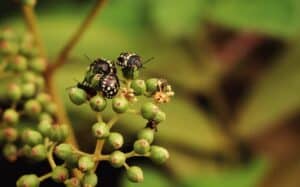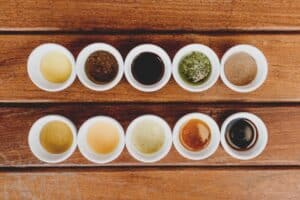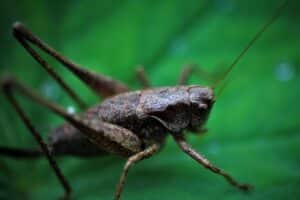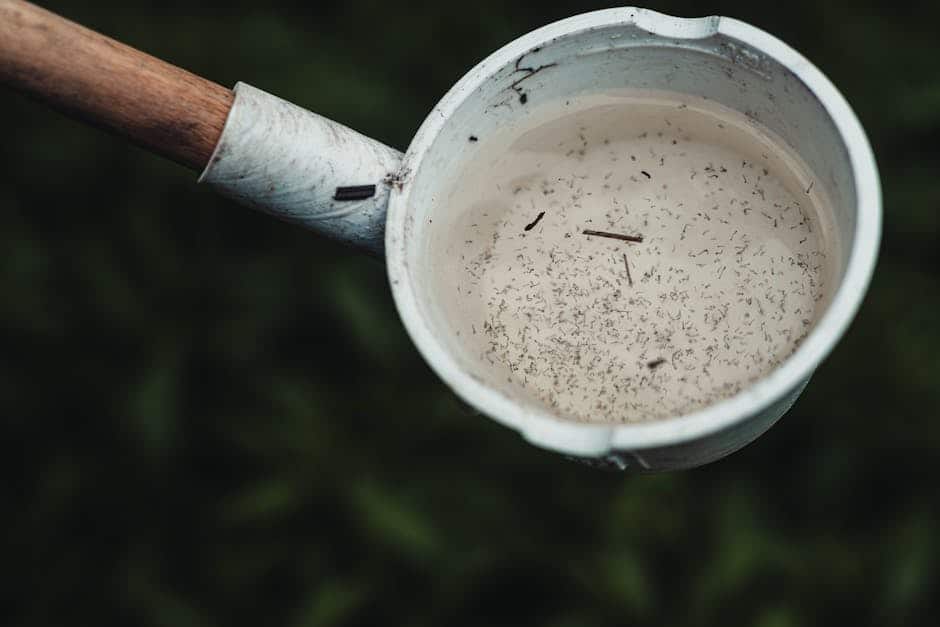What Are Chemical Control Methods and How Do They Work?
Chemical control methods refer to the use of chemical substances to manage pests, diseases, and unwanted vegetation in agricultural, horticultural, and environmental settings. These methods play a crucial role in integrated pest management (IPM) strategies, offering targeted solutions to control infestations effectively. By understanding the various types of chemical control methods, their mechanisms, and their applications, stakeholders can make informed decisions to protect crops and maintain ecological balance.
Types of Chemical Control Methods
Chemical control methods can be categorized into several types, including:
- Pesticides: These are substances designed to kill or repel pests, including insecticides, herbicides, fungicides, and rodenticides.
- Fertilizers: While primarily used to enhance plant growth, some fertilizers can also suppress certain plant diseases and improve crop resilience.
- Growth Regulators: These chemicals influence plant growth processes, helping to manage crop development and reduce susceptibility to pests and diseases.
How Chemical Control Methods Work
Chemical control methods operate through various mechanisms depending on the type of substance used. For instance, insecticides disrupt the nervous system of insects, leading to paralysis and death. Herbicides target specific pathways in plants, preventing growth and effectively controlling unwanted vegetation. Fungicides inhibit the growth of fungi, thereby protecting crops from diseases caused by fungal infections.
The effectiveness of these chemical methods depends on several factors, including the timing of application, the dosage used, and the specific life cycle stage of the target organism. Proper application techniques and adherence to safety guidelines are essential to minimize negative impacts on non-target species and the environment. Understanding these principles allows farmers and land managers to utilize chemical control methods efficiently, ensuring sustainable agricultural practices.
Exploring Non-Chemical Control Methods: Benefits and Techniques
Non-chemical control methods are gaining popularity as sustainable alternatives for managing pests and diseases in agriculture, gardening, and various ecosystems. These techniques prioritize environmental health, human safety, and the preservation of beneficial organisms. By exploring the benefits and techniques of non-chemical control, individuals and organizations can adopt practices that promote a balanced ecosystem while effectively managing unwanted pests.
Benefits of Non-Chemical Control Methods:
1. Environmental Safety: Non-chemical methods reduce the risk of harmful residues in soil and water, protecting wildlife and beneficial insects.
2. Human Health: These methods minimize exposure to toxic substances, ensuring safer environments for workers and consumers.
3. Sustainability: By promoting biodiversity and natural pest control mechanisms, non-chemical methods contribute to long-term ecological balance.
4. Cost-Effectiveness: Many non-chemical techniques, such as crop rotation and companion planting, can be more affordable and accessible for farmers and gardeners.
Techniques for Non-Chemical Control:
– Cultural Practices: Implementing practices like crop rotation, intercropping, and maintaining healthy soil can deter pests naturally.
– Biological Control: Introducing natural predators or parasites, such as ladybugs for aphids, helps keep pest populations in check.
– Mechanical Control: Physical barriers, traps, and manual removal of pests are effective methods to manage infestations without chemicals.
– Botanical Insecticides: Utilizing plant-derived substances, such as neem oil or diatomaceous earth, can provide a targeted approach to pest management while being less harmful to non-target species.
By focusing on these non-chemical strategies, individuals can cultivate healthier ecosystems while effectively managing pest populations. Emphasizing education and awareness about these methods will empower more people to adopt sustainable practices in their pest control efforts.
Comparative Analysis: Chemical vs. Non-Chemical Control Methods
When it comes to pest management, the choice between chemical and non-chemical control methods is crucial for both efficacy and environmental sustainability. Chemical control methods, which often involve the use of synthetic pesticides, provide rapid results in managing pest populations. These products are designed to target specific pests effectively, making them a popular choice for farmers and homeowners looking to quickly address infestations. However, the reliance on chemicals can lead to several drawbacks, including potential harm to beneficial insects, soil and water contamination, and the development of pest resistance.
On the other hand, non-chemical control methods emphasize more sustainable practices that aim to minimize environmental impact. Techniques such as biological control, which involves the use of natural predators or parasites to manage pest populations, and cultural practices, such as crop rotation and companion planting, are gaining traction. These methods not only help in controlling pests but also promote biodiversity and soil health. Furthermore, non-chemical methods can often be more cost-effective in the long term, as they reduce the need for repeated applications of chemical treatments.
When comparing these two approaches, it is essential to consider factors such as effectiveness, environmental impact, and the long-term sustainability of pest management strategies. Here are some key points of comparison:
- Effectiveness: Chemical methods often provide immediate results, while non-chemical methods may take longer to show effects but can lead to more sustainable pest management.
- Environmental Impact: Chemical controls can pose risks to non-target species and ecosystems, whereas non-chemical methods tend to be more environmentally friendly.
- Cost: While initial costs for chemical treatments may be lower, non-chemical approaches can reduce long-term expenses by promoting healthier ecosystems.
In practice, many pest management professionals advocate for an Integrated Pest Management (IPM) approach, which combines both chemical and non-chemical methods. This strategy allows for a more comprehensive understanding of pest dynamics while minimizing the negative effects associated with chemical use. By evaluating the specific context of pest issues, practitioners can make informed decisions that balance effectiveness and sustainability.
When to Use Chemical Control Methods: Key Considerations
When considering the application of chemical control methods in pest management, it’s crucial to assess several key factors that can influence their effectiveness and safety. The first consideration is the type of pest you are dealing with. Different pests may respond better to specific chemical formulations, so identifying the pest accurately is essential. For instance, some chemicals target insects, while others are more effective against weeds or fungal diseases. Understanding the biology and behavior of the pest can guide the selection of the most appropriate chemical control method.
Another important factor is the environmental impact of using chemical controls. Before proceeding, evaluate the surrounding ecosystem, including beneficial insects, wildlife, and water sources. Certain chemicals can have unintended consequences on non-target species, leading to ecological imbalances. It is vital to consider the potential risks and opt for targeted applications or environmentally friendly alternatives when possible. Implementing integrated pest management (IPM) strategies that combine chemical methods with biological and cultural controls can help mitigate these risks.
Timing is also a critical consideration when using chemical control methods. The life cycle stage of the pest plays a significant role in determining the right moment for application. For example, applying a pesticide when the pest is in its vulnerable larval stage can yield better results than targeting it during its adult phase. Additionally, weather conditions can affect the efficacy of chemical applications. Rainfall can wash away pesticides, while extreme temperatures may reduce their effectiveness. Monitoring weather patterns and pest populations will help ensure that chemical controls are applied at the optimal time for maximum impact.
Lastly, it’s essential to consider regulatory guidelines and safety protocols when using chemical control methods. Many chemicals are subject to strict regulations regarding their application, usage, and disposal. Familiarizing yourself with local laws and guidelines can prevent legal issues and ensure safe handling practices. Always wear appropriate personal protective equipment (PPE) and follow the manufacturer’s instructions to minimize risks to yourself and others. By taking these key considerations into account, you can make informed decisions about when to use chemical control methods effectively.
Best Practices for Implementing Non-Chemical Control Methods
Implementing non-chemical control methods effectively requires a strategic approach tailored to the specific pest problem at hand. One of the best practices is to conduct a thorough pest assessment. This involves identifying the type of pest, understanding its life cycle, and recognizing its natural predators. By gaining a comprehensive understanding of the pest’s behavior and habitat, you can develop targeted strategies that minimize its impact while promoting ecological balance.
Another key practice is to integrate cultural controls into your pest management plan. This can include crop rotation, adjusting planting times, and selecting pest-resistant plant varieties. For example, rotating crops can disrupt pest life cycles and reduce their populations. Additionally, maintaining healthy soil through proper fertilization and irrigation practices can bolster plant resilience, making them less susceptible to pest infestations.
Employing physical barriers is also a vital non-chemical control method. Installing row covers, nets, or traps can effectively prevent pests from accessing plants. It’s important to regularly inspect these barriers to ensure they remain intact and functional. Additionally, implementing sanitation measures, such as removing debris and weeds that can harbor pests, can significantly reduce pest pressure.
Finally, fostering an environment that encourages natural predators can enhance your pest management efforts. This can be achieved by planting diverse crops that attract beneficial insects, such as ladybugs and lacewings. Providing habitats like insect hotels or native flowering plants can also support these natural allies. By creating a balanced ecosystem, you can reduce reliance on chemical treatments while promoting sustainable agricultural practices.













